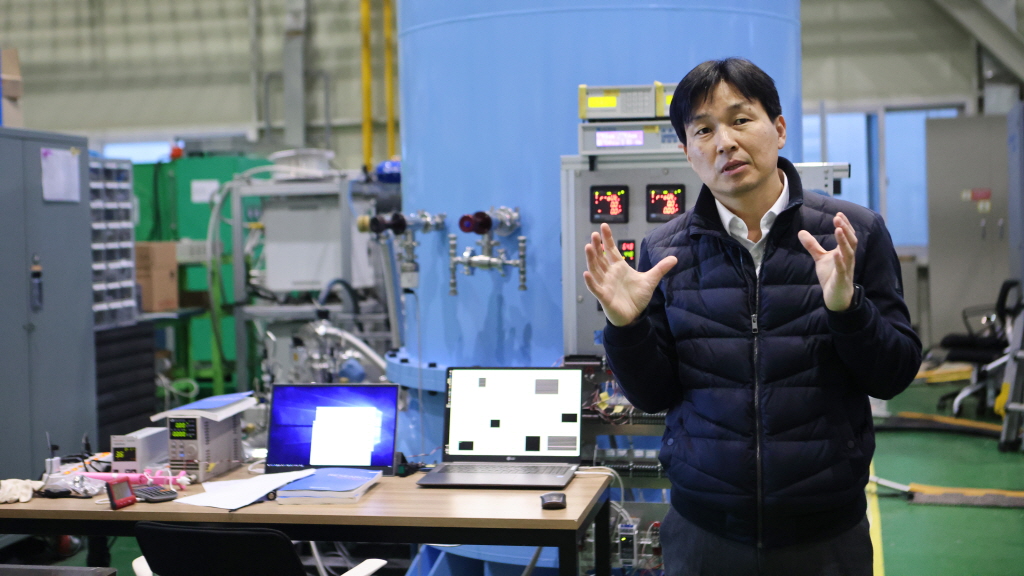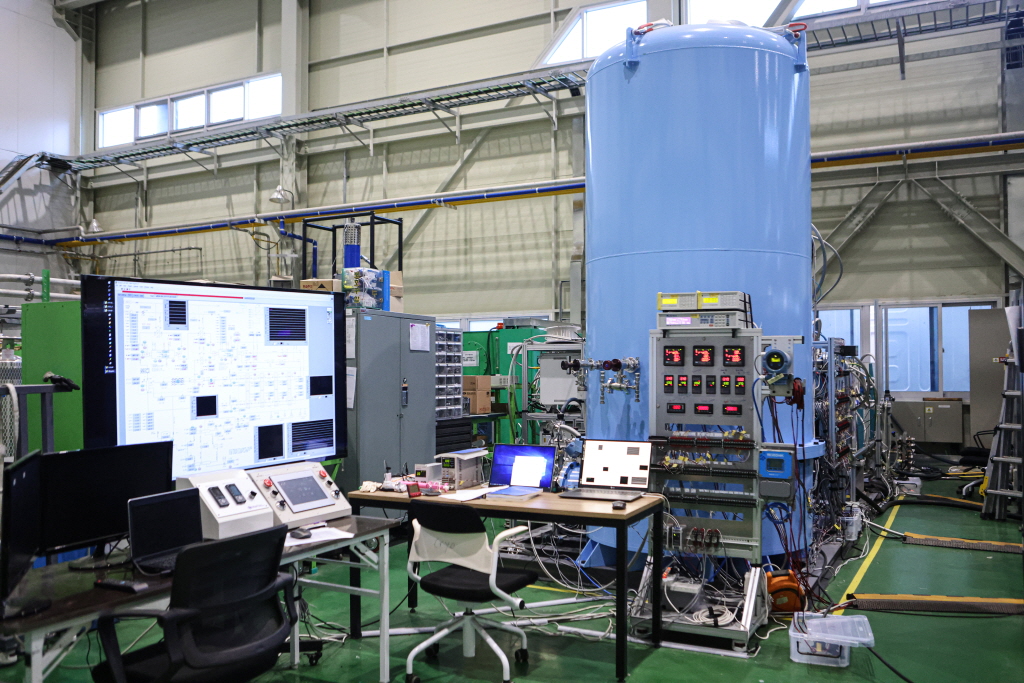과학기술정보통신부 산하 한국기계연구원(원장 류석현) 고준석 에너지저장연구실장 연구팀이 Zero GWP 냉매를 이용한 터보-브레이튼 냉각시스템을 개발하고, 영하 100℃에서 10kW 이상의 냉각용량을 확인하는 운전시험에 성공했다.

▲기계연 고준석 실장이 터보-브레이튼 냉각시스템에 대해 설명하고 있다
터보-브레이튼 냉각시스템, 영하 100℃ 10kW 냉각 성능 확인
지구 온난화에 전혀 영향을 미치지 않는 냉매를 적용한 대용량 초저온 터보-브레이튼 냉각시스템의 냉각성능 시험을 국내 최초로 성공했다.
과학기술정보통신부 산하 한국기계연구원(원장 류석현) 고준석 에너지저장연구실장 연구팀은 Zero GWP 냉매를 이용한 터보-브레이튼 냉각시스템을 개발하고, 영하 100℃에서 10kW 이상의 냉각용량을 확인하는 운전시험에 성공했다고 20일 밝혔다.
터보-브레이튼 냉각시스템으로 대용량 초저온 냉각기술 개발의 실 운전을 통한 입증은 국내 최초이다.
기계연은 자체 개발한 원심압축기와 터보팽창기를 이용해 터보-브레이튼 냉각시스템을 개발했다.
반도체 산업을 중심으로 한 산업계에서 냉각온도 영하 100℃ 이하, 냉각용량 10kW 이상의 대용량 초저온 칠러에 대한 수요가 증가해 왔는데, 이번 연구를 통해 터보-브레이튼 냉각 기술이 이러한 산업계의 요구를 만족시킬 수 있는 유력한 기술임을 확인했다.
터보-브레이튼 냉각기술은 수만∼수십만 rpm의 고속으로 회전하는 터보기계를 이용하는 냉각시스템으로, 초전도 케이블 냉각, 극저온 유체 과냉각, LNG 재액화 등 제한된 영역에서 사용돼 왔다.
반면에 최근에는 반도체 제조공정과 바이오산업에서 대용량 초저온 냉각기술에 대한 요구가 급증하고 있으며, 동시에 탄소 중립과 냉매 규제 강화로 인한 고효율 Low GWP 냉각기술 개발이 요구되고 있다.
기존 증기-압축 방식의 초저온 칠러는 높은 GWP의 냉매 혹은 폭발의 위험성이 높은 자연 냉매를 이용하며, 기자재의 제약 조건으로 인한 대용량화의 어려움, 냉매의 특성과 제한적인 제어방식으로 인한 운전 온도 및 용량 제어의 어려움이 있다.
반면 이번에 개발한 터보-브레이튼 냉각시스템은 5.5∼11kW 범위에서 자유롭게 용량 제어가 가능하며, Low GWP를 넘어서는 Zero GWP 냉매를 사용해 최근 산업계의 요구 방향인 ‘초저온, 대용량, 고효율’을 모두 만족할 수 있는 기술이다.
연구팀은 전량 수입에 의존하던 핵심부품인 원심압축기와 터보팽창기를 자체 개발하여 국산화한데 이어, 국내에서 성공 사례가 없었던 터보-브레이튼 냉각시스템 실 운전 성능시험까지 성공함으로써 전주기 기술을 확보하게 됐다.
기계연 고준석 연구실장은 “Zero GWP 냉매를 활용해 영하 100℃의 초저온에서 10kW 이상의 대용량 냉각에 성공한 것은 산업계의 요구 사항을 충족한 성과”라며 “3년 이내에 산업용 칠러에 적합한 형태로 시스템을 개발해 반도체 산업 등 다양한 산업 현장에서 사용할 수 있는 수준으로 발전시키겠다”고 말했다.
한편 이번 연구는 기계연 기본사업 ‘반도체 제조공정 초저온 냉각시스템 핵심기계 개발’ 과제의 지원을 받아 수행됐다.

▲터보-브레이튼 냉각시스템

